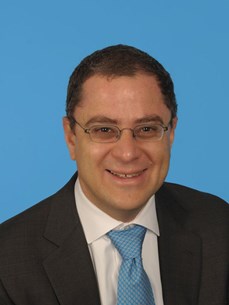Meeting
2022 ASCO Gastrointestinal Cancers Symposium

Department of Medicine, Memorial Sloan Kettering Cancer Center & Weill Medical College at Cornell University, New York, NY
Ghassan K. Abou-Alfa , Stephen Lam Chan , Masatoshi Kudo , George Lau , Robin Kate Kelley , Junji Furuse , Wattana Sukeepaisarnjaroen , Yoon-Koo Kang , Tu V. Dao , Enrico N. De Toni , Lorenza Rimassa , Valeriy Vladimirovich Breder , Alexander Vasilyev , Alexandra Heurgue , Vincent Tam , Kabir Mody , Satheesh Chiradoni Thungappa , Philip He , Alejandra Negro , Bruno Sangro
Background: A single priming dose of T (anti-CTLA-4) added to D (anti-PD-L1) in the STRIDE (Single T Regular Interval D) regimen, formerly T300+D, showed encouraging clinical activity and limited toxicity in a phase 2 uHCC study (Study 22, NCT02519348), suggesting single exposure to T is sufficient to improve upon D activity. HIMALAYA (NCT03298451) evaluated the efficacy and safety of STRIDE or D vs sorafenib (S) in uHCC. Methods: HIMALAYA is an open-label, multicenter, phase 3 study, in which pts with uHCC and no prior systemic therapy were initially randomized to STRIDE (T 300 mg plus D 1500 mg [one dose] plus D 1500 mg every 4 weeks [Q4W]), D (1500 mg Q4W), S (400 mg twice daily), or T 75 mg Q4W (4 doses) plus D 1500 mg Q4W (T75+D). Recruitment to T75+D ceased after a planned analysis of Study 22 showed T75+D did not meaningfully differ from D. The primary objective was overall survival (OS) for STRIDE vs S. The secondary objective was OS noninferiority (NI) of D to S (NI margin: 1.08). Secondary endpoints included progression-free survival (PFS), objective response rate (ORR; RECIST v.1.1), duration of response (DoR), and safety. Results: In total, 1171 pts were randomized to STRIDE (N=393), D (N=389), or S (N=389). At data cutoff (DCO), the primary objective was met: OS was significantly improved for STRIDE vs S (hazard ratio [HR], 0.78; 96% confidence interval [CI], 0.65–0.92; p=0.0035; Table). D met the objective of OS NI to S (HR, 0.86; 96% CI, 0.73–1.03). ORRs were higher for STRIDE (20.1%) and D (17.0%) than for S (5.1%). No new safety signals were identified. Grade 3/4 treatment-related adverse events (TRAEs) occurred in 25.8% (STRIDE), 12.9% (D), and 36.9% (S) of pts. Grade 3/4 hepatic TRAEs occurred in 5.9% (STRIDE), 5.2% (D), and 4.5% (S) of pts. No TRAE of esophageal varices hemorrhage occurred. Rates of TRAEs leading to discontinuation were 8.2% (STRIDE), 4.1% (D), and 11.0% (S). Conclusions: HIMALAYA was the first large phase 3 trial with a diverse, representative uHCC population and extensive long-term follow-up to assess both mono- and combination immunotherapy. D was noninferior to S with favorable safety. The combination of a single priming dose of T plus D in STRIDE displayed superior efficacy and a favorable benefit-risk profile vs S. STRIDE is a proposed, novel, first-line standard of care systemic therapy for uHCC. Clinical trial information: NCT03298451.
| STRIDE (n=393) | D (n=389) | S (n=389) | |
|---|---|---|---|
| Median follow-up, mo | 16.1 | 16.5 | 13.3 |
| Deaths at DCO, % | 66.7 | 72.0 | 75.3 |
| Median OS (95% CI), mo | 16.4 (14.2–19.6) | 16.6 (14.1–19.1) | 13.8 (12.3–16.1) |
| 24/36-mo OS rate, % | 40.5/30.7 | 39.6/24.7 | 32.6/20.2 |
| Median PFS (95% CI), mo | 3.8 (3.7–5.3) | 3.7 (3.2–3.8) | 4.1 (3.8–5.5) |
| ORR, % | 20.1 | 17.0 | 5.1 |
| Median DoR, mo | 22.3 | 16.8 | 18.4 |
| Grade 3/4 TRAE, % | 25.8 | 12.9 | 36.9 |
| Serious TRAE, % | 17.5 | 8.2 | 9.4 |
| Grade 5 TRAE, % | 2.3 | 0 | 0.8 |
| TRAE leading to discontinuation, % | 8.2 | 4.1 | 11.0 |
Disclaimer
This material on this page is ©2024 American Society of Clinical Oncology, all rights reserved. Licensing available upon request. For more information, please contact licensing@asco.org
2022 ASCO Gastrointestinal Cancers Symposium
Oral Abstract Session
Oral Abstract Session B: Cancers of the Pancreas, Small Bowel, and Hepatobiliary Tract
Pancreatic Cancer,Hepatobiliary Cancer,Neuroendocrine/Carcinoid,Small Bowel Cancer
Therapeutics
NCT03298451
10.1200/JCO.2022.40.4_suppl.379
379
Abstract Disclosures
2023 ASCO Gastrointestinal Cancers Symposium
First Author: Jia Fan
2023 ASCO Annual Meeting
First Author: George Lau
2023 ASCO Annual Meeting
First Author: George Lau
2018 ASCO Annual Meeting
First Author: Ghassan K. Abou-Alfa